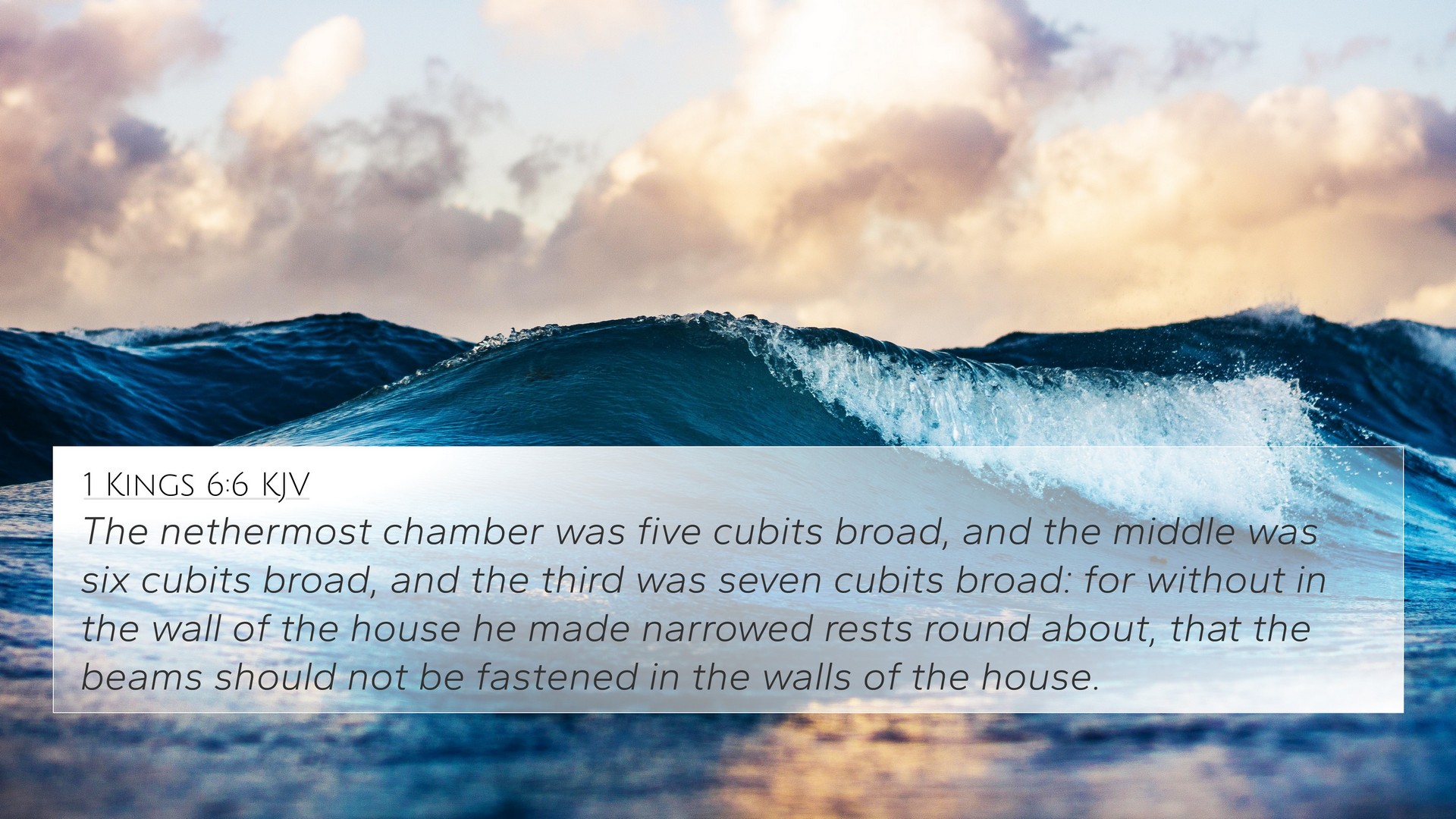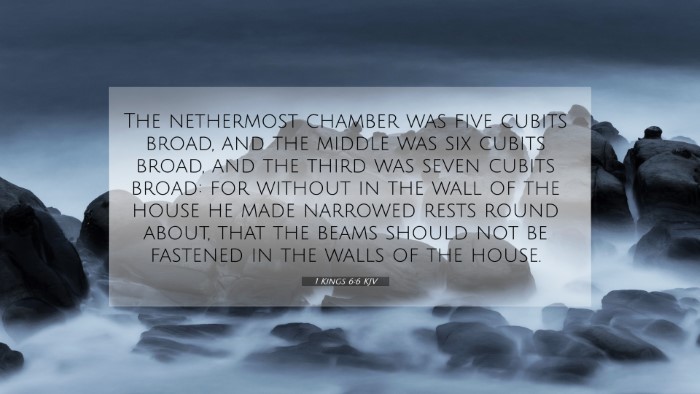Understanding 1 Kings 6:6
This passage describes the construction details of the temple built by Solomon. It provides insight into the grandeur and meticulousness of the temple structure. Through various public domain commentaries, we can delve deeper into its meanings and thematic connections with other biblical texts.
Verse Context
1 Kings 6:6 states: "The lowest story was five cubits wide, the middle was six cubits wide, and the third was seven cubits wide; for around the temple, there were offsets, so that the supports would not be inserted into the walls of the temple."
Commentary Insights
Matthew Henry's Commentary
Henry emphasizes the careful design and structure of the temple, illustrating God's desire for excellence in worship. The varying widths of the stories symbolize the hierarchical nature of God's house, where every detail serves a purpose in leading the worshippers closer to the divine.
Albert Barnes' Notes
Barnes highlights the architectural significance. The offsets mentioned were intended to strengthen the walls, which can be seen as a metaphor for the strength drawn from maintaining a relationship with God. This verse reminds us that spiritual foundations are built on sturdy principles, much like the physical structure of the temple.
Adam Clarke's Commentary
Clarke notes that the temple's construction is not just a physical act but a spiritual endeavor. The careful planning reflects the importance of spiritual preparation and the need for God's presence in every aspect of life. The offsets around the temple also suggest the idea of support systems — in faith and community.
Bible Cross References
This verse connects with various other scriptures that enhance its meaning. Here are some relevant cross-references:
- Exodus 25:8-9 - God instructs Israel to build a sanctuary, illustrating the importance of a dedicated space for worship.
- 1 Chronicles 22:9-10 - God's promise to David regarding his son Solomon further emphasizes the divine plan for the temple.
- 2 Chronicles 3:3-4 - Details regarding the dimensions and layout of the temple, affirming the significance of Solomon's work.
- Hebrews 9:24 - References the heavenly sanctuary, connecting the earthly temple to God's ultimate place of worship.
- Matthew 21:12-13 - Jesus’ cleansing of the temple connects to the physical temple's purpose versus its perversion by commerce.
- Psalm 132:5 - The desire for a dwelling place for God, which reflects the intention behind building the temple.
- Haggai 1:8 - Encouragement to rebuild the temple and restore worship practices, linking past and present intentions.
Thematic Connections
The construction of the temple and its description in 1 Kings can be seen as part of a greater biblical narrative focused on God's desire to dwell among His people. A few thematic connections and insights include:
- Divine Presence: The temple signifies God’s presence among His people, echoing themes found in Exodus and Revelation.
- Worship and Reverence: The meticulous details represent the reverence due to God, which can be linked to teachings in the New Testament.
- Spiritual Architecture: Just as the temple was thoughtfully built, believers are encouraged to build their lives as living temples for God.
Conclusion
1 Kings 6:6 serves as a valuable text in understanding both the physical and spiritual implications of building a place of worship for God. It sets the stage for deep theological exploration and inter-Biblical dialogues surrounding the essence of worship, community, and divine habitation.
By studying this verse and its references extensively, believers can strengthen their faith and enhance their understanding of scriptural connections.


